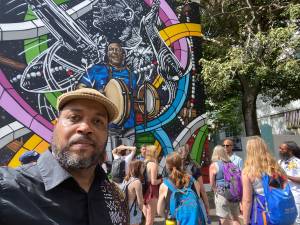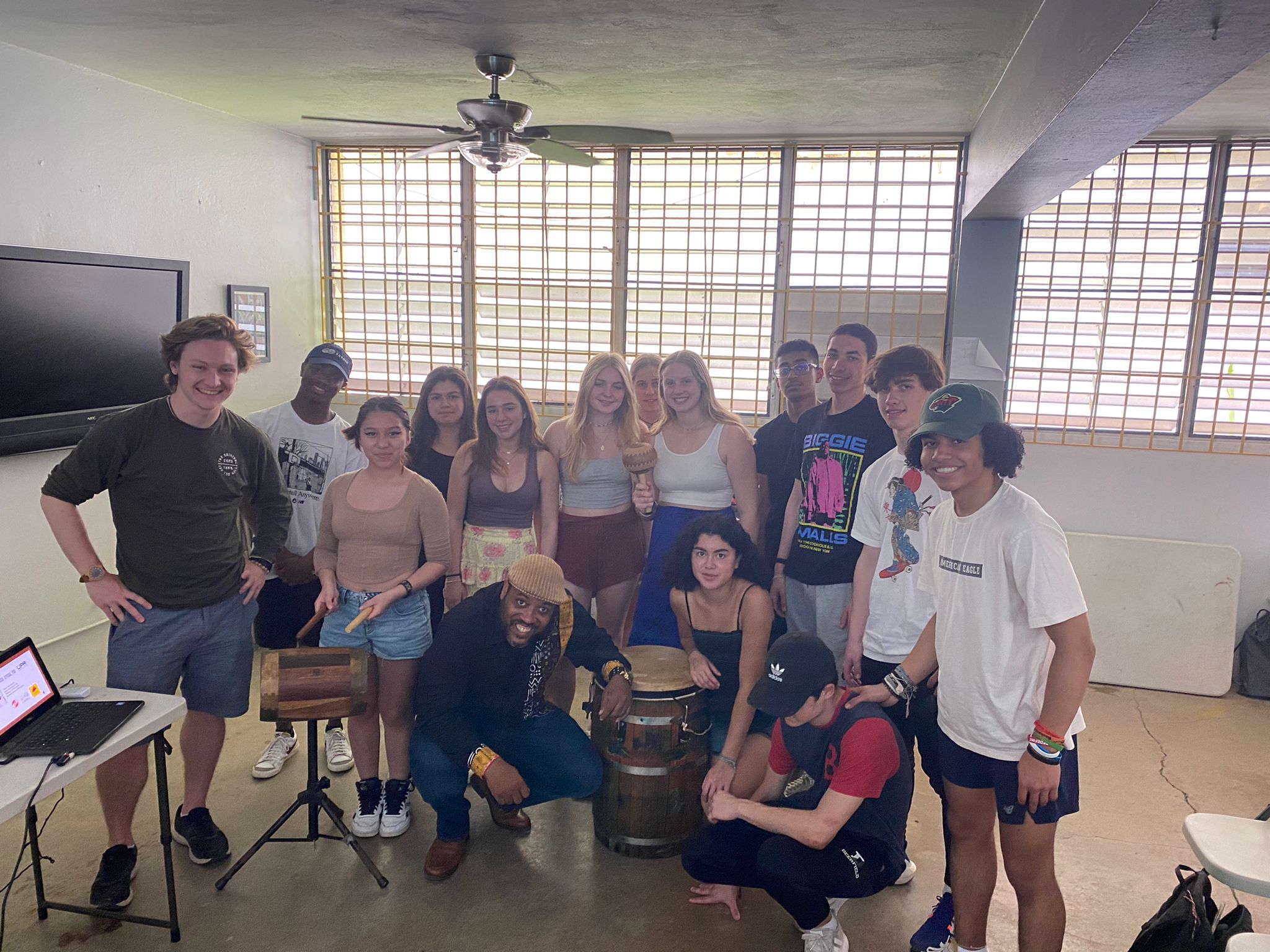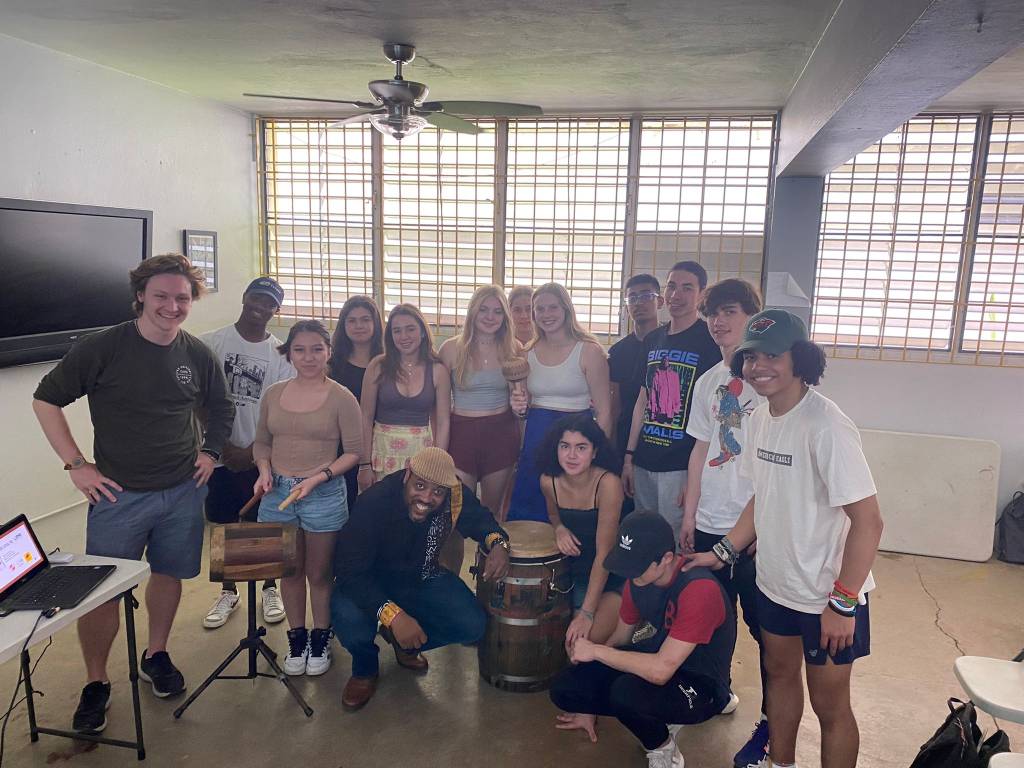Ishaan Myrie ’25 and Elsa Schuberth ’22, share a visit to the community center in San Juan, where they learn about Bomba, a traditional dance and musical style of Puerto Rico.
Ishaan Myrie ’25:
Today was another very interesting day. We went to Taller Comunidad La Goyco, which is a community center in San Juan. We learned that the building had almost been destroyed but that the community had saved it and turned it into a community center. There, we met a Plena artist named Emmanuel, who gave us background information about Plena and introduced us to some notable artists in the genre, including Tito Matos. Tito Matos, was a very influential artist but sadly died recently. The mural made for him which Emmanuel demonstrated Plena to us, and I liked listening to it.
We then learned about the history of Bomba with Mr. Pablo Rivera. Mr. Rivera told us about the origins, socialization, elements, and instruments revolving around Bomba. To me, the most interesting fact I learned was that Bomba is similar to many other musical cultures in the Caribbean. After Mr. Rivers’s presentation, we then learned the basic steps to different Bomba styles with a dancer named Yenitza. My personal favorite was sica, which was the easiest for me to do. Yenitza’s dancing was phenomenal, and the sica dance is something I hope I won’t forget.
Elsa Schuberth ’22:
After a splendid pizza lunch in the scorching sun, I sat together with Pablo (who told us about the history of Bomba), Juliana, Isabelle and Lauren, listening to a conversation they had in Spanish. After a few minutes I finally gathered enough courage to participate in the conversation. I asked Pablo the questions I had prepared in my head: where he was from and about his passion for Bomba and Plena. I was happy and relieved when Pablo was able to understand my questions. But the most difficult part of the conversation was definitely understanding his response, which was something I was not prepared to struggle with. I was so focused on him understanding me that I forgot that I also had to understand him. I was not used to speaking Spanish with a native speaker, who speaks fast, with a wide vocabulary and a Puerto Rican accent. Luckily, Juliana helped me to clarify some words that I didn’t understand. However, I was proud of getting out of my comfort zone and using my Spanish skills. Yet, the conversation was definitely an eye opener as to how important it is to use your skills outside of the classroom in order to improve.
After the grant workshop and an ice cream break, we had our Bomba session. Amaury held the workshop and together with Sancho, they played the four rhythms that we had talked about in the morning (sica, quembe, olande and yuba) on two Bomba drums. They made us practice listening and telling the difference between the rhythms. Despite the difficulty to distinguish the different rhymes, it was still fun to hear them play the bomba drums with such energy and sense of rhythm. Afterwards, Yenitza taught us dance steps that would match the different rhythms and Amaury taught us how to use the instruments that are parts of Bomba: the cuá (two wooden sticks that you hit on a barrel), the Bomba drum and the Maraca. I believe we all felt the sense of community and togetherness despite our not so perfect dancing or drumming. Bomba plays an important role in social and political movements and works as a symbol for the fight for decolonization in Puerto Rico. Also, it is a way to, as I said, socialize and to feel a sense of community, which I believe that we all felt in the classroom. We ended the day with eating Puerto Rican food at a restaurant near the hotel. The food was as usual fantastic with rice, beans, tostones and beef.


